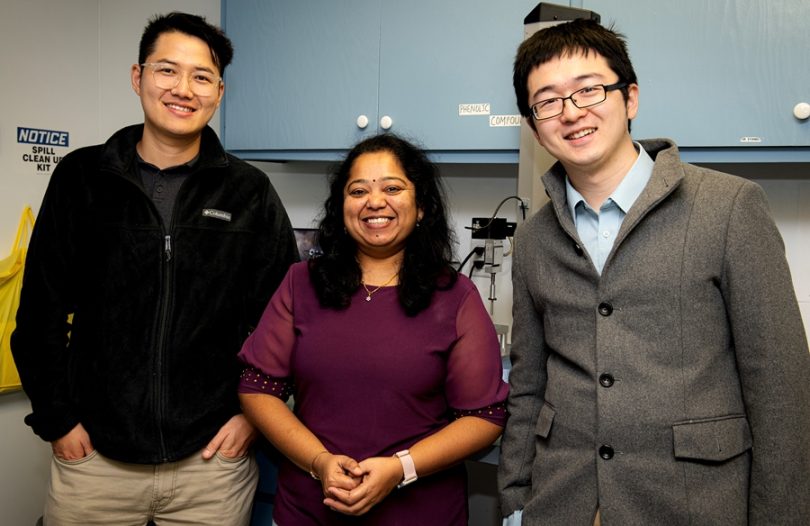[ad_1]

The research team, from left, includes Yihong Feng, Swarna Sethu and Dongyi Wang.
The National Science Foundation awarded an Innovation Corps entrepreneurship grant to an Arkansas Agricultural Experiment Station research team for a machine vision system developed using artificial intelligence-guided imaging.
The $50,000 grant supports participation in the NSF’s I-Corps Program. It is designed to help technology developers translate promising ideas and technologies from the laboratory to the marketplace, increase the United States’s economic competitiveness and encourage collaboration between academia and industry, according to the NSF’s I-Corp website.
The team in the Biological and Agricultural Engineering Department includes Dongyi Wang, assistant professor, as principal investigator; Swarna Sethu, a post-doctoral researcher, as entrepreneurial lead; graduate student Yihong Feng as technical lead; and Wale Obadimu, a site reliability engineer at LinkedIn, as industry lead.
Sethu said the NSF I-Corps program uses experiential education to help researchers gain valuable insight into entrepreneurship, starting a business or industry requirements and challenges. Participants learn practical skills in connecting with customers, asking the right questions and how to find partners to help get startup ideas off the ground.
As part of the I-Corps program, Sethu participated in a seven-week cohort program, a training seminar to develop entrepreneurship skills. She conducted interviews with industry advisers and consumers to help determine the most promising markets for the technology.
Funded by an NSF seed grant, Wang developed the idea of teaching an AI program to discern human responses to digital images of food products. The team used machine learning technology to teach an AI-guided digital imaging system to predict whether or not consumers would find food products acceptable.
Sethu photographed the products under variable color lights to change the appearance of the foods.
The team collaborated with Han-Seok Seo, associate professor of sensory science in the experiment station’s Department of Food Science, to correlate the machine’s predictions with a consumer panel of people trained to evaluate food products in his lab. Sethu said 75 panelists participated in the study.
Wang said the AI-guided system now has a high reliability rate in predicting consumer acceptance. “It can give hard data to support its predictions,” he said.
The system can also help consumers who shop on retailers’ mobile apps by accurately presenting product images in the most appealing lighting, Wang said. “It can create an enhanced visual experience for consumers.”
The predictive technology is almost ready, Wang said, but they have to develop a marketable app for it. He said the team may also investigate ways to adapt the technology to other retail products.
To learn more about Division of Agriculture research, visit the Arkansas Agricultural Experiment Station website: https://aaes.uada.edu/. Follow us on Twitter at @ArkAgResearch and on Instagram at @ArkAgResearch. To learn more about the Division of Agriculture, visit https://uada.edu/. Follow us on Twitter at @AgInArk.
About the Division of Agriculture: The University of Arkansas System Division of Agriculture’s mission is to strengthen agriculture, communities, and families by connecting trusted research to the adoption of best practices. Through the Agricultural Experiment Station and the Cooperative Extension Service, the Division of Agriculture conducts research and extension work within the nation’s historic land grant education system. The Division of Agriculture is one of 20 entities within the University of Arkansas System. It has offices in all 75 counties in Arkansas and faculty on five system campuses. The University of Arkansas System Division of Agriculture offers all its Extension and Research programs and services without regard to race, color, sex, gender identity, sexual orientation, national origin, religion, age, disability, marital or veteran status, genetic information, or any other legally protected status, and is an Affirmative Action/Equal Opportunity Employer.
[ad_2]
Source link








